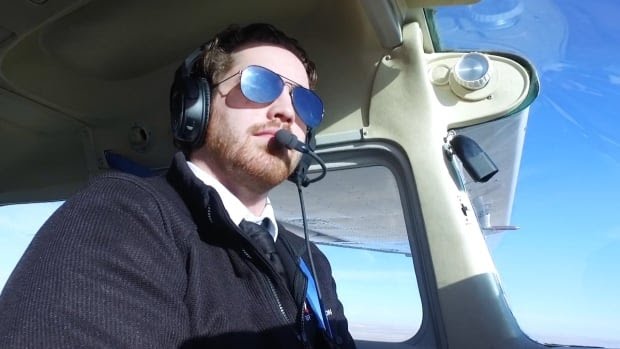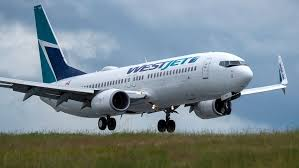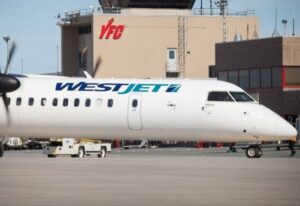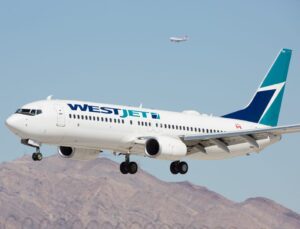
A pilot shortage across Canada is causing some regional carriers to cancel flights, put less experienced pilots in the cockpit and has even had an impact on some air ambulance services.
A combination of factors is causing the shortage — ever-increasing air travel by Canadians, a shortage around the world and a large number of pilots reaching retirement.
A soon-to-be released report by the Canadian Council for Aviation and Aerospace says Canada should be producing an extra 300 pilots a year to meet demand of a growing air travel industry.
“Those seats are going to be sold at a premium because you will have more people wanting those seats, so the end result is the cost of flying, I would suggest, is inevitably going to go up.”
Some in the industry say flight schools should be producing twice as many pilots to meet demand.

New federal rules around pilot fatigue could make the problem worse as airlines may have to hire substantially more pilots to maintain current flight schedules, industry representatives and observers say.
The shortage is hitting regional carriers harder because the national airlines have an easier time hiring pilots. Most pilots aspire to fly their large jets, which travel faster and at higher altitudes, and the compensation scale is more lucrative in the later stages of a career.
Pilots at Thunder Bay-based Bearskin Airlines traditionally fly for the company for two or three years before moving on to work at larger airlines. These days, they usually only stay for six months before they’re scooped up.
March 2017 was a particularly bad month for Bearskin as 10 of its 50 pilots on staff were plucked by national airlines, Bearskin admits it’s losing pilots at a “crazy rate” and turnover is not improving.
“It tightens up our scheduling, it means we pay overtime,” said Trevor Gavinchuk, a pilot and director of flight operations with Bearskin. “The rest of the pilots pick up the slack that month or two it takes to get people trained.”
So far, the airline has not had to cancel flights, but it’s a real possibility in the future.
‘Constant recruitment’
“It has gotten worse in the last five years,” said Gavinchuk. “It’s constant recruitment.”
Bearskin isn’t alone as airlines across Canada drop their experience requirements for new pilots and spend more money on recruitment and training. Its new pilots now must have 750 flying hours instead of 1,000.
Over the last 10 years, air passenger travel in Canada has grown by 3.6 per cent on average, according to Transport Canada.
In the face of the pilot shortage, some airlines haven’t been able to avoid grounding flights.
Mississauga, Ont.-based Air Georgian, which operates under the Air Canada Express banner, has had to cancel flights because of the pilot shortage, When there are cancellations because of poor weather, the airline struggles to catch up since there aren’t fresh crews available to call in.
“With every airline hiring right now, there is a lot of competition out there,” said Troy Stephens, vice-president of flight operations at Air Georgian.
Not only is there competition for pilots in Canada with air travel expanding in the country, but international airlines are also looking to hire Canadian pilots.
“The competition never used to be like it is all around the world. You have Amazon buying Airbuses, Vietnam putting in crazy orders, the Middle East buying hundreds,” said Stephens. “They’re paying big dollars to get our pilots who speak English and have experience.”

A few decades ago, those in the industry say pilots needed upwards of 5,000 flying hours before a national airline would consider hiring them. Now the threshold is substantially lower. Recent job postings at WestJet Encore, for instance, only required 1,000 hours.
WestJet and Air Canada declined interview requests.
In a statement, WestJet said it is hiring “as we always have been.”
Air Canada receives “thousands of applications far exceeding vacancies in every round of pilot hiring,” it said in a statement. Its pilots must have a minimum of 2,000 to 3,000 hours of flying time.
Plight of flight schools
Flight schools are feeling the pinch as airlines hire away their instructors and find that replacing them is difficult.
Three weeks after Medicine Hat, Alta.-based Super T aviation posted an instructor position opening on an industry job board, there were no responses. Owner Terri Super says airlines can’t keep hiring instructors or else the industry could implode.
“They just can’t continue to take everybody and leave no one behind with any experience or depth to teach the next generation. We just can’t do it,” said Super.
Canada likely produced about 1,000 pilots in 2017, by her count, although half of them are international students who often don’t stay after graduation.
“The airlines have projections to take over 1,200 [pilots]. So right there is a deficit,” she said.
“The airlines can’t get the quality and experienced people they want, so they take from the smaller operators, so now the smaller operators don’t have experienced people they can keep, so the industry takes from the flight training industry which means there are no flight instructors to train the upcoming commercial pilots,” she said.
ADVERTISEMENT
She says the experience level of instructors and pilots gets watered down. While Super doesn’t have safety concerns, she knows of at least one regional carrier that has strict restrictions on its pilots to compensate for their inexperience. If there is any type of bad weather, the flight is cancelled.

‘Cancelled flights’
“It ends up affecting the flying public,” said Super. “They have a lot of cancelled flights.”
In 2016, less than 1,200 commercial pilot licences were issued, a drop of 28 per cent from the 2009 peak of 1,645, according to the CCAA.
The medevac industry has not escaped the impacts of the shortage. Ornge, which provides emergency and urgent patient transportation services in Ontario, has occasionally had to ground some of its planes and rely on slower types of transportation such as helicopters and ground ambulances.